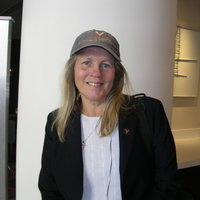African Swine Fever Virus (Asfarviridae) sequences and HHV-6 found in people with febrile illnesses
Abstract
Virus Identification in Unknown Tropical Febrile Illness Cases Using Deep Sequencing
Dengue virus is an emerging infectious agent that infects an estimated
50–100 million people annually worldwide, yet current diagnostic
practices cannot detect an etiologic pathogen in ∼40% of dengue-like
illnesses. Metagenomic approaches to pathogen detection, such as viral
microarrays and deep sequencing, are promising tools to address
emerging and non-diagnosable disease challenges. In this study, we
used the Virochip microarray and deep sequencing to characterize the
spectrum of viruses present in human sera from 123 Nicaraguan patients
presenting with dengue-like symptoms but testing negative for dengue
virus. We utilized a barcoding strategy to simultaneously deep
sequence multiple serum specimens, generating on average over 1
million reads per sample. We then implemented a stepwise bioinformatic
filtering pipeline to remove the majority of human and low-quality
sequences to improve the speed and accuracy of subsequent unbiased
database searches. By deep sequencing, we were able to detect virus
sequence in 37% (45/123) of previously negative cases. These included
13 cases with Human Herpesvirus 6 sequences. Other samples contained
sequences with similarity to sequences from viruses in the Herpesviridae, Flaviviridae, Circoviridae, Anelloviridae, Asfarviridae, and Parvoviridae
families. In some cases, the putative viral sequences were virtually
identical to known viruses, and in others they diverged, suggesting
that they may derive from novel viruses. These results demonstrate the
utility of unbiased metagenomic approaches in the detection of known
and divergent viruses in the study of tropical febrile illness.










